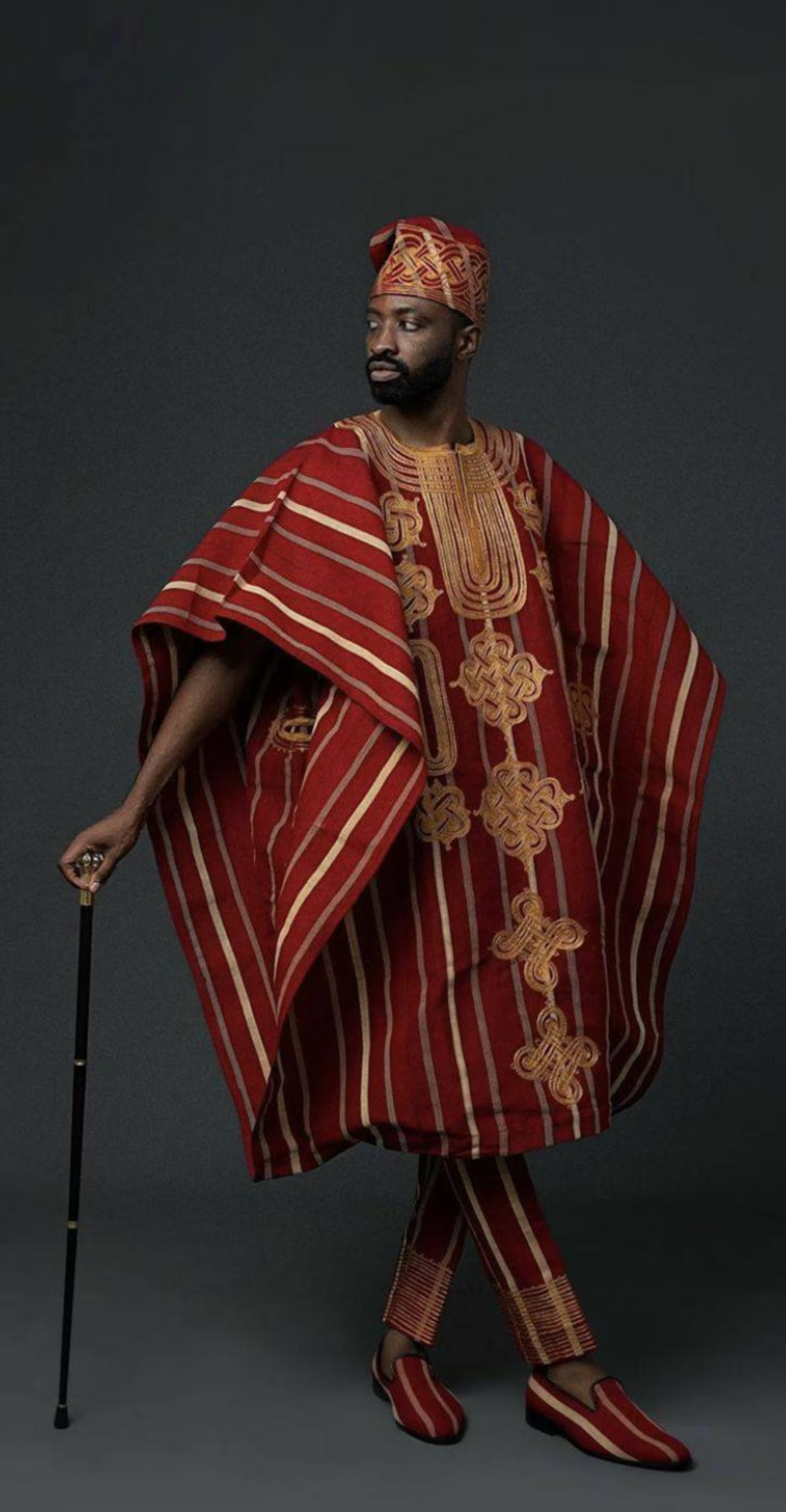Nigerian fashion designers have continually redefined the history of fashion, drawing inspiration from indigenous materials to create contemporary styles. One of the most frequently used materials is aso-oke—a ceremonial Yoruba fabric traditionally woven on a loom. Known for its distinct color and texture, aso-oke symbolizes class and elegance.
Once primarily used for gele (headwraps) and ipele (shawls), aso-oke evolved into a staple fabric for iro and buba (traditional attire). Today, it has transcended its traditional use, becoming a luxury fabric used to create a wide range of outfits, from casual to haute couture.
Aso-Oke: The Fabric of Innovation
The rise of contemporary aso-oke weavers has significantly increased the fabric’s availability, allowing fashion designers to experiment with unique and innovative designs. The weaving industry has become a lucrative venture, attracting artisans and entrepreneurs eager to capitalize on the growing demand. This resurgence has also reshaped the Nigerian fashion industry, encouraging designers to prioritize locally sourced fabrics.
Here are some distinct aso-oke pieces that have made waves in Nigerian fashion:
Hertunba’s Tubo Reni Pièce
Hertunba has consistently showcased its commitment to Nigerian culture. Last year, the brand launched an outfit that incorporated elements from various cultural backgrounds, with aso-oke as a standout feature. This piece, inspired by The Woman King, captivated audiences for months and remained a major fashion highlight.
Aso-Oke Pant Trousers
This trend took the fashion world by storm. Initially, designers crafted plain aso-oke pants, but they soon evolved into aso-oke collage trousers, blending different patterns and textures. These pants exude a vintage yet modern appeal, making them a coveted fashion item.
The Aso-Oke Kimono
Among the most exquisite designs crafted from aso-oke, the aso-oke kimono stands out for its bold aesthetic and luxurious feel. Due to the fabric’s natural density and texture, the kimono carries an aura of regality and exclusivity.
Medlin Boss’s Aso-Oke Ensemble for Nancy Isime
This stunning red outfit exemplifies the evolution of aso-oke. Medlin Boss masterfully combined aso-oke trousers with an aso-oke embroidered kimono, pairing them with a white shirt and a European-style tie—a fusion of tradition and modernity. The result? A show-stopping ensemble that celebrates cultural heritage while embracing contemporary fashion trends.
The aso-oke movement is here to stay. Nigerian youth can embrace and explore this rich textile tradition, learning the art of weaving and incorporating aso-oke into modern designs. Today, aso-oke is regarded as a luxury fabric, with high demand and limited supply. Many individuals are revamping their mothers’ old aso-oke fabrics into stylish, contemporary outfits.
However, despite its growing popularity, the number of skilled weavers remains low, leading to high production costs and long waiting periods. While a few stores specialize in aso-oke, there is still a need for more retail outlets to make the fabric more accessible.
One thing is certain—the aso-oke revolution is far from over. It continues to shape Nigerian fashion, proving that heritage and modernity can coexist beautifully.
Read Also:Why I ditched jeans forever – Kevin Hart
Read Also: Makinde mandates Oyo workers to wear Aso Oke every Thursday



